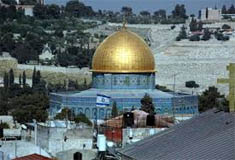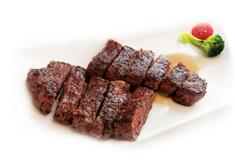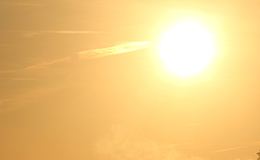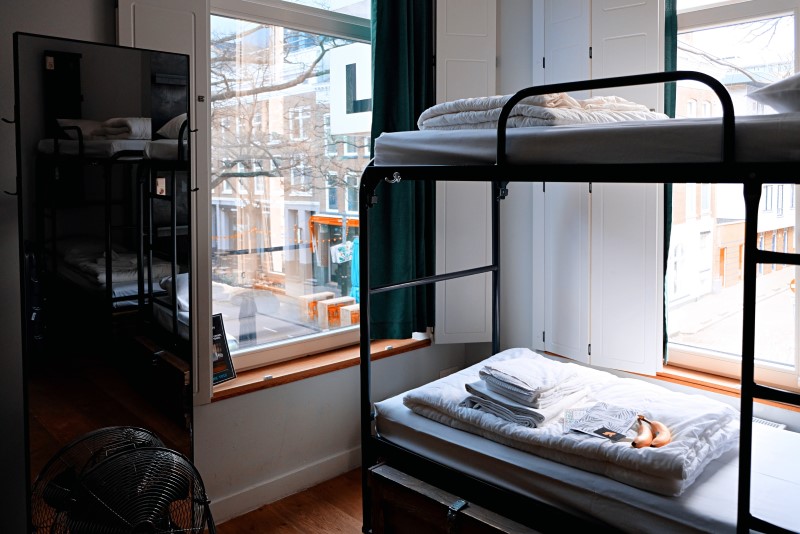The Unrevealed Sanctuary: Why Yerushalayim Was Kept a Mystery
הרב שי טחןכג אב, תשפד27/08/2024Our parasha begins with a pasuk stating that we are only allowed to bring Korbanot (sacrifices) at the place that Hashem chooses
תגיות:בית המקדשירושליםקרבנות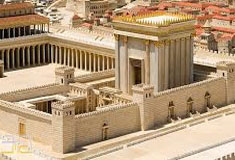
Our parasha begins with a pasuk stating that we are only allowed to bring Korbanot (sacrifices) at the place that Hashem chooses. This is the location where we are to build the future Beit HaMikdash, the holiest site where the Shechina dwells. However, the Torah does not specify where this place is, leaving us with a sense of uncertainty. Notably, the name "Yerushalayim" is not mentioned anywhere in the Five Books of Moshe, which further deepens the mystery.
On one hand, many parashot focus extensively on the construction of the Mishkan, detailing who is to work there, how the Kohanim should perform their duties, and the specific garments they are to wear. The Torah also elaborates on the procedures for offering korbanot. Yet, on the other hand, it does not explicitly tell us where the Beit HaMikdash should be built.
detailing who is to work there, how the Kohanim should perform their duties, and the specific garments they are to wear. The Torah also elaborates on the procedures for offering korbanot. Yet, on the other hand, it does not explicitly tell us where the Beit HaMikdash should be built.
Sefer Tehillim(פרק קלב) tells us that King David took it upon himself to find the special place that Hashem desired, to purchase it, and to build a house for Hashem there. He vowed not to enter his home or sleep on his bed until Hashem revealed the location. He said: "Hashem, remember my vow that I will not enter my house, nor will I sleep on my bed. I will not give sleep to my eyes or slumber to my eyelids until I find a place for Hashem."
Indeed, after extensively searching and pleading with Hashem, the prophet Gad came to David and revealed that the place was Har HaBayit in the city of Yerushalayim, owned by Aravna from the nation of Yevus(שמואל ב, כד) . As soon as King David learned this, he immediately went to Aravna and offered to buy the land.
When Aravna saw the king coming to his field, he asked in surprise why David was there. When David explained that he wanted to purchase the land, Aravna offered to donate it for this important cause. However, David insisted that he would not take it for free, as he did not want to sacrifice to Hashem without paying, and therefore paid the full price.
This was David's journey, through which he merited fulfilling Hashem's concealed request to have sacrifices offered at the place He desired, even though the actual location had not been previously revealed.
But why did Hashem choose not to reveal the location, which we now know is Yerushalayim, and more specifically, the Beit HaMikdash? The Rambam(מורה נבוכים עמוד שעח) addressed this question and offered three approaches, which remain highly relevant today.
The first answer the Rambam offers is that Hashem concealed the place so that the nations wouldn't know about it and would fight to occupy it. Looking back, we see how true this answer is, as the primary goal of many conflict, has been to conquer Yerushalayim, particularly the Har HaBayit.
For generations, many nations have fought over this holy site. It's interesting to note that they only sought to conquer the city when the nation of Israel was present. While the Jewish people were in exile, the city held little interest for others. However, once Israel returned after World War II, interest in the city surged, and once again, many are willing to sacrifice lives for it.
Also, the recent war is primarily about the quest to overtake Yerushalayim. The enemy has pointed this out by naming the war "The Flood of Al-Aqsa." Every terrorist who dies receives a poster declaring that he is on the way to Yerushalayim.
The second answer the Rambam gives is that Hashem didn't want the nations to understand the significance of the place, fearing they would destroy it. This is exactly what has happened throughout history, as the enemies of the Jewish people targeted this sacred location because of its importance. We learn how the Babylonians conquered Jerusalem and burned the Beit HaMikdash, and how the Romans destroyed the entire city. Even today, the enemy vows to destroy all the holy sites.
This holds special truth in our time as we witness many groups destroying historical monuments, holy sites, and places of worship throughout the world.
The third approach the Rambam offers is that Hashem didn't want the tribes to fight over Jerusalem once they learned of its significance. Today, we see this scenario play out as well, with various religions claiming Jerusalem as their holy city, leading to ongoing conflicts over its control.
Although the Torah does not explicitly tell us where these places were, the kedusha (holiness) of the location was well known to our forefathers. For instance, Avraham went to sacrifice Yitzchak on Har HaMoriah, which is the Har HaBayit. When he approached the place, he saw a cloud representing the holy Shechinah resting above it.
Yaakov stopped there to sleep after leaving Lavan's house, where he had the prophecy of the angels ascending and descending the ladder. Many others also brought sacrifices to Hashem at this very place, including Adam HaRishon, Kayin and Hevel, and Noach after exiting the ark(רמב״ם פרק ב’ מהלכות בית הבחירה ה״ב) .
This site might be so holy because it is known to be the place where the world was created, and from that very point, the rest of the world formed(אבן השתיה, שממנו הושתת העולם) . The Gemara(קדושין סט) states that Yerushalayim is the highest place in the world. The commentators(ראה חת״ס ומהרש״א) point out that, factually, this is not physically true. They explain that the Gemara does not mean "high" in a physical sense but rather in a spiritual sense.
The Midrash(תהלים צב) tells us that the gates to Gan Eden pass through this location. When Adam HaRishon realized this, he chose to dwell there.
On one hand, many parashot focus extensively on the construction of the Mishkan,

Sefer Tehillim(פרק קלב) tells us that King David took it upon himself to find the special place that Hashem desired, to purchase it, and to build a house for Hashem there. He vowed not to enter his home or sleep on his bed until Hashem revealed the location. He said: "Hashem, remember my vow that I will not enter my house, nor will I sleep on my bed. I will not give sleep to my eyes or slumber to my eyelids until I find a place for Hashem."
Indeed, after extensively searching and pleading with Hashem, the prophet Gad came to David and revealed that the place was Har HaBayit in the city of Yerushalayim, owned by Aravna from the nation of Yevus(שמואל ב, כד) . As soon as King David learned this, he immediately went to Aravna and offered to buy the land.
When Aravna saw the king coming to his field, he asked in surprise why David was there. When David explained that he wanted to purchase the land, Aravna offered to donate it for this important cause. However, David insisted that he would not take it for free, as he did not want to sacrifice to Hashem without paying, and therefore paid the full price.
This was David's journey, through which he merited fulfilling Hashem's concealed request to have sacrifices offered at the place He desired, even though the actual location had not been previously revealed.
But why did Hashem choose not to reveal the location, which we now know is Yerushalayim, and more specifically, the Beit HaMikdash? The Rambam(מורה נבוכים עמוד שעח) addressed this question and offered three approaches, which remain highly relevant today.
The first answer the Rambam offers is that Hashem concealed the place so that the nations wouldn't know about it and would fight to occupy it. Looking back, we see how true this answer is, as the primary goal of many conflict, has been to conquer Yerushalayim, particularly the Har HaBayit.
For generations, many nations have fought over this holy site. It's interesting to note that they only sought to conquer the city when the nation of Israel was present. While the Jewish people were in exile, the city held little interest for others. However, once Israel returned after World War II, interest in the city surged, and once again, many are willing to sacrifice lives for it.
Also, the recent war is primarily about the quest to overtake Yerushalayim. The enemy has pointed this out by naming the war "The Flood of Al-Aqsa." Every terrorist who dies receives a poster declaring that he is on the way to Yerushalayim.
The second answer the Rambam gives is that Hashem didn't want the nations to understand the significance of the place, fearing they would destroy it. This is exactly what has happened throughout history, as the enemies of the Jewish people targeted this sacred location because of its importance. We learn how the Babylonians conquered Jerusalem and burned the Beit HaMikdash, and how the Romans destroyed the entire city. Even today, the enemy vows to destroy all the holy sites.
This holds special truth in our time as we witness many groups destroying historical monuments, holy sites, and places of worship throughout the world.
The third approach the Rambam offers is that Hashem didn't want the tribes to fight over Jerusalem once they learned of its significance. Today, we see this scenario play out as well, with various religions claiming Jerusalem as their holy city, leading to ongoing conflicts over its control.
Although the Torah does not explicitly tell us where these places were, the kedusha (holiness) of the location was well known to our forefathers. For instance, Avraham went to sacrifice Yitzchak on Har HaMoriah, which is the Har HaBayit. When he approached the place, he saw a cloud representing the holy Shechinah resting above it.
Yaakov stopped there to sleep after leaving Lavan's house, where he had the prophecy of the angels ascending and descending the ladder. Many others also brought sacrifices to Hashem at this very place, including Adam HaRishon, Kayin and Hevel, and Noach after exiting the ark(רמב״ם פרק ב’ מהלכות בית הבחירה ה״ב) .
This site might be so holy because it is known to be the place where the world was created, and from that very point, the rest of the world formed(אבן השתיה, שממנו הושתת העולם) . The Gemara(קדושין סט) states that Yerushalayim is the highest place in the world. The commentators(ראה חת״ס ומהרש״א) point out that, factually, this is not physically true. They explain that the Gemara does not mean "high" in a physical sense but rather in a spiritual sense.
The Midrash(תהלים צב) tells us that the gates to Gan Eden pass through this location. When Adam HaRishon realized this, he chose to dwell there.
הוסף תגובה
עוד מהרב שי טחן
עוד בנושא עם וארץ ישראל



